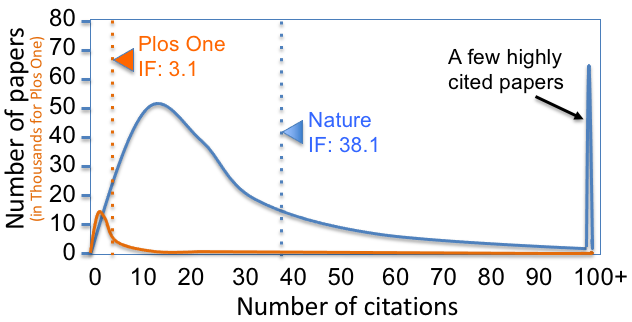|
Toxicon
''Toxicon'' is a peer-reviewed scientific journal of toxinology and the official journal of the International Society on Toxinology and the North American Society of Toxinology. It is published by Elsevier and the editor-in-chief is Ray Norton. It aims to publish original research, novel findings, and review papers on toxins and their chemical, toxicological, pharmacological, and immunological properties. The journal was established in 1962. According to the ''Journal Citation Reports'', ''Toxicon'' has a 2020 impact factor The impact factor (IF) or journal impact factor (JIF) of an academic journal is a scientometric index calculated by Clarivate that reflects the yearly mean number of citations of articles published in the last two years in a given journal, as ... of 3.033. References External links * {{Official, http://www.elsevier.com/wps/find/journaldescription.cws_home/259/description Publications established in 1962 Elsevier academic journals English-lan ... [...More Info...] [...Related Items...] OR: [Wikipedia] [Google] [Baidu] |
International Society On Toxinology
International Society on Toxinology (IST) is a global society of scientists and clinicians working for the advancement of venoms, poisons and toxins. It was founded in 1962 with an aim to advance knowledge on venoms, poisons and toxins of animal, plant and microbial origin. Origin Pioneer research In 1664 an Italian polymath Francesco Redi wrote his first monumental work ''Osservazioni intorno alle vipere'' (Observations about the Viper) in which he first elucidated the scientific basis of snakebite and venom of the viper. He showed that the venom is produced from the fang, it is not poisonous when swallowed, and dangerous only when it enters the bloodstream. He even showed how to stop or slow down the venom action in the blood by tight ligature before the wound. This work is heralded as the foundation of toxinology and the beginning of experimental toxicology. Foundation In 1962 a group of scientists and clinicians who have made significant contributions to toxinology joined fo ... [...More Info...] [...Related Items...] OR: [Wikipedia] [Google] [Baidu] |
North American Society Of Toxinology
The North American Society of Toxinology (NAST) is a North America-based, international, multidisciplinary organization dedicated to the advancement of the science of all things venomous. It was founded in 2012 and is a 501(c)(3) organization under the U.S. Internal Revenue Service. Origin The progenitor meeting of Venom Week Symposiums, "Snakebites in the New Millennium," was held in 2005 in Omaha, NE. The first meeting named as Venom Week was held in 2007 in Tucson, AZ . and subsequent meetings were held on an ad hoc basis until 2012, when NAST was founded at the combined Venom Week IV/International Society on Toxinology meeting in Honolulu to take on the organizing, and become the primary sponsor of, future Venom Week Symposiums. Foundation At the Venom Week VI meeting (Kingsville, TX, 2018), in recognition of their roles in the founding of NAST, the "Founder Award" was given to James Armitage, Leslie Boyer, Sean Bush, Dan Keyler, Steven Seifert and Carl-Wilhelm Vogel. Orga ... [...More Info...] [...Related Items...] OR: [Wikipedia] [Google] [Baidu] |
Toxinology
A toxin is a naturally occurring organic poison produced by metabolic activities of living cells or organisms. Toxins occur especially as a protein or conjugated protein. The term toxin was first used by organic chemist Ludwig Brieger (1849–1919) and is derived from the word toxic. Toxins can be small molecules, peptides, or proteins that are capable of causing disease on contact with or absorption by body tissues interacting with biological macromolecules such as enzymes or cellular receptors. Toxins vary greatly in their toxicity, ranging from usually minor (such as a bee sting) to potentially fatal even at extremely low doses (such as botulinum toxin). Toxins are largely secondary metabolites, which are organic compounds that are not directly involved in an organism's growth, development, or reproduction, instead often aiding it in matters of defense. Terminology Toxins are often distinguished from other chemical agents strictly based on their biological origin. Less str ... [...More Info...] [...Related Items...] OR: [Wikipedia] [Google] [Baidu] |
Toxin
A toxin is a naturally occurring organic poison produced by metabolic activities of living cells or organisms. Toxins occur especially as a protein or conjugated protein. The term toxin was first used by organic chemist Ludwig Brieger (1849–1919) and is derived from the word toxic. Toxins can be small molecules, peptides, or proteins that are capable of causing disease on contact with or absorption by body tissues interacting with biological macromolecules such as enzymes or cellular receptors. Toxins vary greatly in their toxicity, ranging from usually minor (such as a bee sting) to potentially fatal even at extremely low doses (such as botulinum toxin). Toxins are largely secondary metabolites, which are organic compounds that are not directly involved in an organism's growth, development, or reproduction, instead often aiding it in matters of defense. Terminology Toxins are often distinguished from other chemical agents strictly based on their biological origin. Les ... [...More Info...] [...Related Items...] OR: [Wikipedia] [Google] [Baidu] |
Immunology
Immunology is a branch of medicineImmunology for Medical Students, Roderick Nairn, Matthew Helbert, Mosby, 2007 and biology that covers the medical study of immune systems in humans, animals, plants and sapient species. In such we can see there is a difference of human immunology and comparative immunology in veterinary medicine and animal biosciences. Immunology measures, uses charts and differentiate in context in medicine the studies of immunity on cell and molecular level, and the immune system as part of the physiological level as its functioning is of major importance. In the different states of both health, occurring symptoms and diseases; the functioning of the immune system and immunological responses such as autoimmune diseases, allergic hypersensitivities, or in some cases malfunctioning of immune system as for example in immunological disorders or in immune deficiency, and the specific transplant rejection) Immunology has applications in numerous disciplines of ... [...More Info...] [...Related Items...] OR: [Wikipedia] [Google] [Baidu] |
English-language Journals
English is a West Germanic language of the Indo-European language family, with its earliest forms spoken by the inhabitants of early medieval England. It is named after the Angles, one of the ancient Germanic peoples that migrated to the island of Great Britain. Existing on a dialect continuum with Scots, and then closest related to the Low Saxon and Frisian languages, English is genealogically West Germanic. However, its vocabulary is also distinctively influenced by dialects of France (about 29% of Modern English words) and Latin (also about 29%), plus some grammar and a small amount of core vocabulary influenced by Old Norse (a North Germanic language). Speakers of English are called Anglophones. The earliest forms of English, collectively known as Old English, evolved from a group of West Germanic ( Ingvaeonic) dialects brought to Great Britain by Anglo-Saxon settlers in the 5th century and further mutated by Norse-speaking Viking settlers starting in ... [...More Info...] [...Related Items...] OR: [Wikipedia] [Google] [Baidu] |
Elsevier Academic Journals
Elsevier () is a Dutch academic publishing company specializing in scientific, technical, and medical content. Its products include journals such as '' The Lancet'', '' Cell'', the ScienceDirect collection of electronic journals, '' Trends'', the '' Current Opinion'' series, the online citation database Scopus, the SciVal tool for measuring research performance, the ClinicalKey search engine for clinicians, and the ClinicalPath evidence-based cancer care service. Elsevier's products and services also include digital tools for data management, instruction, research analytics and assessment. Elsevier is part of the RELX Group (known until 2015 as Reed Elsevier), a publicly traded company. According to RELX reports, in 2021 Elsevier published more than 600,000 articles annually in over 2,700 journals; as of 2018 its archives contained over 17 million documents and 40,000 e-books, with over one billion annual downloads. Researchers have criticized Elsevier for its high profit marg ... [...More Info...] [...Related Items...] OR: [Wikipedia] [Google] [Baidu] |
Publications Established In 1962
To publish is to make content available to the general public.Berne Convention, article 3(3) URL last accessed 2010-05-10.Universal Copyright Convention, Geneva text (1952), article VI . URL last accessed 2010-05-10. While specific use of the term may vary among countries, it is usually applied to text, images, or other content, including paper ( |
Thomson Reuters
Thomson Reuters Corporation ( ) is a Canadian multinational media conglomerate. The company was founded in Toronto, Ontario, Canada, where it is headquartered at the Bay Adelaide Centre. Thomson Reuters was created by the Thomson Corporation's purchase of the British company Reuters Group in April 2008. It is majority-owned by The Woodbridge Company, a holding company for the Thomson family. History Thomson Corporation The forerunner of the Thomson company was founded by Roy Thomson in 1934 in Ontario, as the publisher of '' The Timmins Daily Press''. In 1953, Thomson acquired the '' Scotsman'' newspaper and moved to Scotland the following year. He consolidated his media position in Scotland in 1957, when he won the franchise for Scottish Television. In 1959, he bought the Kemsley Group, a purchase that eventually gave him control of the '' Sunday Times''. He separately acquired the '' Times'' in 1967. He moved into the airline business in 1965, when he acquire ... [...More Info...] [...Related Items...] OR: [Wikipedia] [Google] [Baidu] |
Impact Factor
The impact factor (IF) or journal impact factor (JIF) of an academic journal is a scientometric index calculated by Clarivate that reflects the yearly mean number of citations of articles published in the last two years in a given journal, as indexed by Clarivate's Web of Science. As a journal-level metric, it is frequently used as a proxy for the relative importance of a journal within its field; journals with higher impact factor values are given the status of being more important, or carry more prestige in their respective fields, than those with lower values. While frequently used by universities and funding bodies to decide on promotion and research proposals, it has come under attack for distorting good scientific practices. History The impact factor was devised by Eugene Garfield, the founder of the Institute for Scientific Information (ISI) in Philadelphia. Impact factors began to be calculated yearly starting from 1975 for journals listed in the ''Journal Citatio ... [...More Info...] [...Related Items...] OR: [Wikipedia] [Google] [Baidu] |




